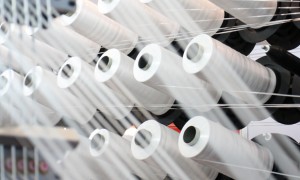Is print media dead? This is a question that has been buzzing around the marketing world since the rapid surge of the Internet and social media. While many businesses have completely migrated their advertising efforts to the web because of its cost effectiveness, exposure potential and convenience, print media still maintains its stance as a powerful and necessary component of an ad campaign. Let’s take a closer look at print media and some advantages it has over its digital counterparts.
Tangibility – A print media piece is a physical thing. Magazines and newspapers can stay in houses or offices for months or years, while Internet ads can disappear into cyber space instantaneously.
Credibility – There is something about print media that gives a sense of legitimacy. The saturation of popups and banner ads on the web can be overwhelming and the fear of spam and viruses is enough make people weary of clicking. There is no imminent danger in a print media ad.
Branding – Print media ads are excellent for solidifying your brand identity. Your ads should have a consistent aesthetic in terms of fonts, colors and types of images to establish brand recognition.
Target Marketing – Placing ads in publications such as specialty magazines can effectively reach niche audiences that may be more difficult to target online.
More Engaging – Consumers are more engaged when reading printed material, unlike websites, which are often skimmed in as little as a 15 second visit. A study shows that people read digital screen text 20% – 30% slower than printed paper. (Alshaali & Varshney, 2005)
Less Print media Ads – With more and more businesses relying solely on the Internet for their advertising needs, the decline of print media publication can actually be used as a marketing advantage. The publications are less crowded, allowing more room for your ad to shine, and possibly even cheaper prices for that ad space.
QR Codes – Placing QR codes on printed pieces is an excellent way to bridge the gap between print media and web. When scanned with a smartphone, the QR code will take you to a homepage or a special offer page that lives on the web.
The best way to market your business is to utilize as many channels as possible to reach every corner of your target demographic; this should not exclude print media. Although it is likely that most emphasis, in terms of advertising, will be executed online, there still exist those who revel in the glory of the printed page and it’s important to reach them. Finding the right balance between various media will ensure a steady revenue flow, an increase in sales and new customers.
This article comes from forbes edit released

